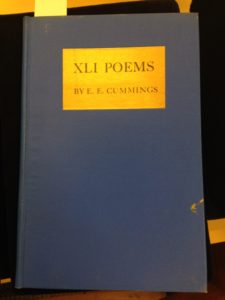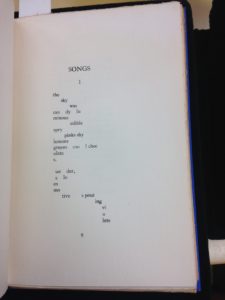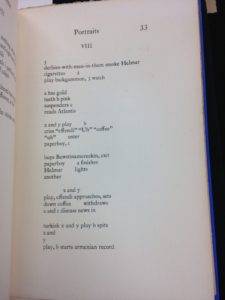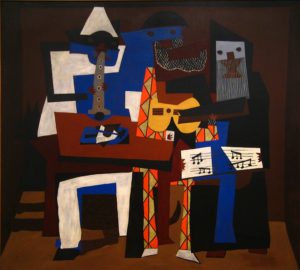LACMA: “Construction for Noble Ladies” (Kurt Schwitters, 1919)

One of the more intriguing movements in the history of modernist art is that of Dadaism. Dadaist paintings were rarely just that: they frequently used different mediums, such as pieces of printed material, sand, and found objects, in their works along with paint. This creates an intricate texture, one that cannot be fully conveyed by p hotographs. Kurt Schwitters’ Construction for Noble Ladies, currently on display at the Los Angeles County Museum of Art, is a perfect example of a dadaist found-object “painting”. This work mimics a traditional painting, and, in fact, is displayed in a room full of them. However, Schwitters’ piece is comprised of several seemingly random objects, including a wheel with broken spokes, a ticket for shipping a bicycle, a funnel, a flattened toy train, and other bits and pieces of detritus, along with paint.
The three-dimensional texture of this masterpiece is not properly conveyed through photographs. In a photograph, the effects of the layered depths of the different parts of the work is somewhat diminished, and the work develops an overall sense of unity that takes away from the experimental nature of the piece. Seeing this work in person highlights the distinct contrast within the work created by Schwitters’ use of almost sculpture-like relief. The intricacies in texture are much clearer, and give a better overall understanding of the piece.
The juxtaposition of this work and the other pieces in the gallery also adds to the avant-garde nature of the piece. Even though the paintings currently displayed on either side of this work are modernist and were experimental art for their time, Schwitters’ creation is clearly cutting edge on another level entirely. It also adds to the absurdity of the dadaist movement as a whole: you don’t typically walk into a German Expressionism gallery in a major art museum expecting to see a flattened toy and an old receipt painted to a piece of cardboard and hung on the wall. This helps the viewer better understand the context in which the dadaist movement existed, and thus better understand how Schwitters’ piece and other dadaist works were received.
 This is a book of poems by E. E. Cummings, published in 1925, just after the heyday of artistic cubism. Upon first glance, the reader can see that Cummings experimented with different ways of laying out his poems on the page. One of the important aspects of cubist art was appealing to different senses, such as the use of textured elements to appeal to the sense of touch through sight. Similarly, cubist literature, such as these poems, use the spacing on the page to influence the sense of sound–the spacing between words affects how one hears the poem in one’s head. Cummings was by no means the only writer to utilize these techniques during the cubist era–both Apollinaire and Gertrude Stein were well known for creating visual poetry, often in even more outrageous ways than included in this compilation.
This is a book of poems by E. E. Cummings, published in 1925, just after the heyday of artistic cubism. Upon first glance, the reader can see that Cummings experimented with different ways of laying out his poems on the page. One of the important aspects of cubist art was appealing to different senses, such as the use of textured elements to appeal to the sense of touch through sight. Similarly, cubist literature, such as these poems, use the spacing on the page to influence the sense of sound–the spacing between words affects how one hears the poem in one’s head. Cummings was by no means the only writer to utilize these techniques during the cubist era–both Apollinaire and Gertrude Stein were well known for creating visual poetry, often in even more outrageous ways than included in this compilation.




